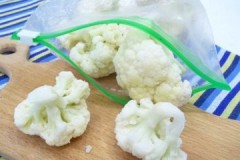Tips for storing cauliflower in the refrigerator
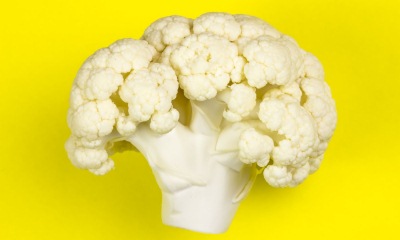 Cauliflower is a healthy vegetable that can be used to prepare various dishes. In order for a vegetable to retain its properties, it must be properly stored.
Cauliflower is a healthy vegetable that can be used to prepare various dishes. In order for a vegetable to retain its properties, it must be properly stored.
In a city apartment, the best place for this is a refrigerator.
How to properly store cauliflower in the refrigerator so that it does not darken, what is the maximum shelf life of a vegetable at home, read the article.
Content
Preparing for home storage
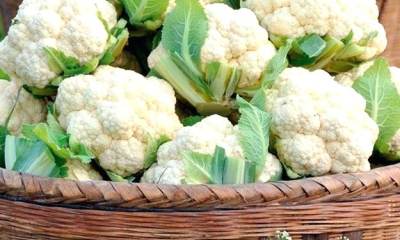 Properly harvested cabbage heads are suitable for storage... They are harvested during the growth period, not allowing the crop to overripe. The heads should weigh between 0.3-1.2 kg.
Properly harvested cabbage heads are suitable for storage... They are harvested during the growth period, not allowing the crop to overripe. The heads should weigh between 0.3-1.2 kg.
If the forks are crumbly, yellow, not holding their shape and sluggish, they are not suitable for long-term storage. A vegetable that has overgrown the harvest time loses a significant part of its nutrients.
Harvested cabbage in dry weather. Cut inflorescences must be immediately transferred to the shade so that they do not begin to wither.
Preparation procedure cabbage:
- Remove dense stumps.
- Remove outer yellowed leaves.
- If there are sprouted leaves, they are removed.
- Rinse.
- Dry.
How to save so that it does not darken and spoil?
A vegetable demanding storage conditions must be carefully selected and prepared. Thereafter:
- Cabbage is packed - each head is placed separately in a plastic bag or wrapped in cling film.
- Placed in a compartment for storing vegetables.
If the zone with the lowest possible temperature is not available (for example, occupied by other vegetables), cabbage will persist worse.
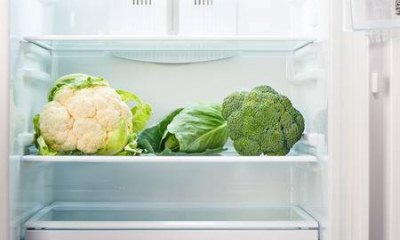 It is also undesirable to allow sudden changes in temperature., since during prolonged storage this can lead to the following consequences:
It is also undesirable to allow sudden changes in temperature., since during prolonged storage this can lead to the following consequences:
- the acquisition of a dark shade by heads of cabbage;
- a change in the taste of a vegetable due to the appearance of an unusual bitterness.
Ultimately, this leads to the fact that the vegetable becomes unusable. It will be impossible to eliminate the unpleasant signs that have appeared.
Preventing cabbage heads from touching each other extends the vegetable's shelf life.
In addition to the usual storage method, you can decompose the vegetable disassembled into inflorescences in jars and sprinkle it with salt... The container is covered with parchment on top.
You will find a lot of useful information on how to store cauliflower here.
Timing, how much a vegetable can be stored
In the refrigerator, storage conditions will differ from the cellar, which is optimal for keeping vegetables.
Freezing significantly extends the shelf life. At low temperatures, cabbage can be stored in the freezer for up to six months or a year.
How to freeze correctly?
Cauliflower can be frozen. For this purpose, strong dense heads of cabbage should be selected and the following activities should be carried out:
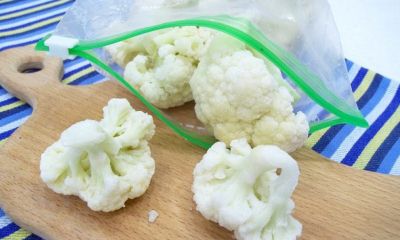 Remove the leaves.
Remove the leaves.- Wash.
- Disassemble into inflorescences.
- Boil for 3-5 minutes.
- Transfer the inflorescences to a colander to drain the water.
- Spread out on paper towels to remove excess water.
- Arrange in separate containers or special bags for freezing.
- Place the container with inflorescences in the freezer. Until the freezing process is over, the containers must be shaken up periodically so that the inflorescences do not stick together.
Another option is to freeze a fresh vegetable. The technology of work is similar to the previous method, excluding the cooking process.
Disadvantages of this approach:
- the likelihood of spoilage of cabbage increases;
- after defrosting and cooking the vegetable, its taste will differ from cabbage, which was boiled before freezing.
In the freezer, the vegetable can be stored in various forms:
- whole or sliced;
- cooked or fresh.
Once thawed, the cabbage cannot be re-frozen. He will tell you how to freeze cauliflower for the winter this article.
3 ways to freeze cauliflower are presented in the video:
11 recommendations
General recommendations of experts will help to avoid common mistakes when preserving the crop cauliflower in the refrigerator:
- If you plan to store vegetables for a long time, then the plants should not be fed with nitrogen fertilizers, as this can lead to rapid deterioration of the final product.
- If the vegetable is damp before being placed in the cold, it must be dried first. It is better to do this outdoors, shading the heads with a thin cloth.
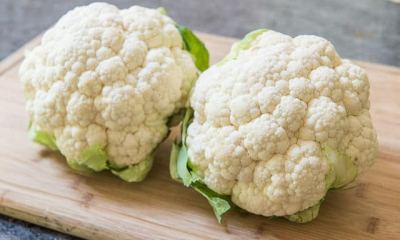 Heads of cabbage with damage should be eaten as early as possible.
Heads of cabbage with damage should be eaten as early as possible.- Do not store all cabbage in the refrigerator in one common package - it will spoil faster. The contact of heads of cabbage provokes processes of decay.
- An alternative option for long-term preservation of inflorescences in the cold is conservation.
- Storage should take place in a cool, dark place with good air ventilation.
- Wet inflorescences must not be frozen.
- When planning the placement of cabbage in the refrigerator, one should take into account its free volume and the fact that it will not be possible to compactly place the inflorescences due to the peculiarities of the shape.
- When frozen and preserved, the vegetable loses some of its nutrients.
- If frozen cabbage is immediately dipped in boiling water without first defrosting, its taste will be higher.
- With prolonged storage, the taste of cabbage begins to deteriorate.
Conclusion
Storage at home in the refrigerator should be carried out in accordance with all the rules, while maintaining the required level of humidity and temperature indicators. At the same time, the vegetable can retain its taste and appearance for several weeks.

